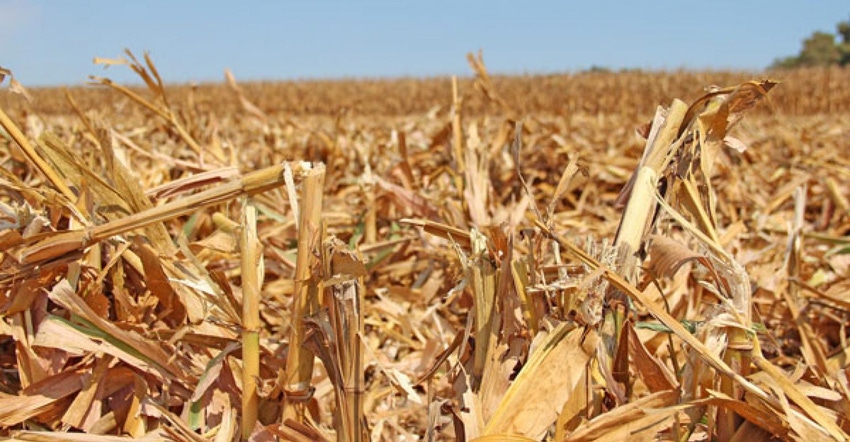What’s the value of corn stalk bales?
As you take inventory of your winter feedstuffs, check out these calculations for valuing corn stalk bales.
November 16, 2020

As winter quickly approaches, now is the time to take an inventory of the available feedstuffs and forages you have on hand.
Do you have enough on hand to get you through winter and spring? Are you anticipating a spike in prices in early 2021? If so, is now the ideal time to buy? Have you talked to your tax planner to know how things are shaping up for your operation financially? Do you have a strategy for acquiring the forages you’ll need to get through the dormant season?
Of course, no two cattle ranchers will answer these questions the same. Environment, location, availability, input costs, etc., all greatly impact the way we approach stockpiling feedstuffs for the winter months.
And whether it’s hay, alfalfa, straw, corn stalk bales, distillers, silage or other feed ingredients, it’s important to know the true value of these inputs and calculate accordingly to fit the needs of your operation.
Today, we’ll tackle corn stalk bales and understanding how to value this line item in your feed inventory. It’s that time of year where the corn fields have been harvested, and the stalks are either being baled or grazed.
So, let’s examine corn stalk bales a little bit closer.
Ben Beckman, University of Nebraska Lincoln, offers some insights on this topic in a recent article titled, “Valuing corn stalk bales.”
Beckman writes, “Figuring out the true value of corn stalk bales can be a bit tricky but breaking down the costs can help it make sense. First, look at the value of nutrients removed from the field that will need to be replaced by fertilizer. Stalks this fall will contain between $3-5 worth of nitrogen, potassium, phosphorus, and sulfur per ton.
“Stalks also provide organic matter and help reduce erosion. We need to account for the loss of these benefits as well. Nebraska research shows that dryland corn yield declines about 2 bushes for each ton of residue removed. Irrigation costs increase similarly to maintain yields in fields when residue is removed, accounting for an additional $10-12 per ton.
“Baling stalks is harder on equipment than putting up grass or alfalfa hay. This additional labor and equipment cost comes in at around $20-25 per ton. Adding everything up, we accumulate $33 to $42 in cost per ton of residue removed.
“With costs calculated, we have to figure out what a bale is worth. From a nutritional standpoint, corn stalk bales are typically even lower quality than straw. Even if being selective with what we harvest by only baling the 2-3 rows behind the combine, we can only count on around 5% crude protein and up to 45% total digestible nutrients (TDN). With these values, combining stalks with distillers grain in a diet may be the most efficient use.”
You can read the entire article by clicking here.
Additionally, William Edwards, retired Extension economist at Iowa State University, adds some things to consider in a recent publication titled, “Estimating a value for corn stover.”
Edwards writes, “Sometimes it is easier to bring the cows to the stover than it is to take the stover to the cows. If fences and water are adequate, stalk fields can simply be rented for grazing. Although rates vary widely, beef cows typically need about two acres per cow per month.
“Corn stover can replace about 25 pounds of hay equivalent per day for a medium-sized cow with no calf nursing, or .375 tons per month. If hay is priced at $100 per ton, the cost is $37.50 per cow per month, so each acre of stover-grazing replaces $18.75 worth of hay. However, the person renting the stover may incur some costs for providing water or fencing, and for moving the cows to the field, which reduces the affordable rent.”
To read his calculations for valuing corn stalk bales verses grazing corn residue, click here.
The opinions of Amanda Radke are not necessarily those of beefmagazine.com or Farm Progress.
About the Author(s)
You May Also Like




.png?width=300&auto=webp&quality=80&disable=upscale)
